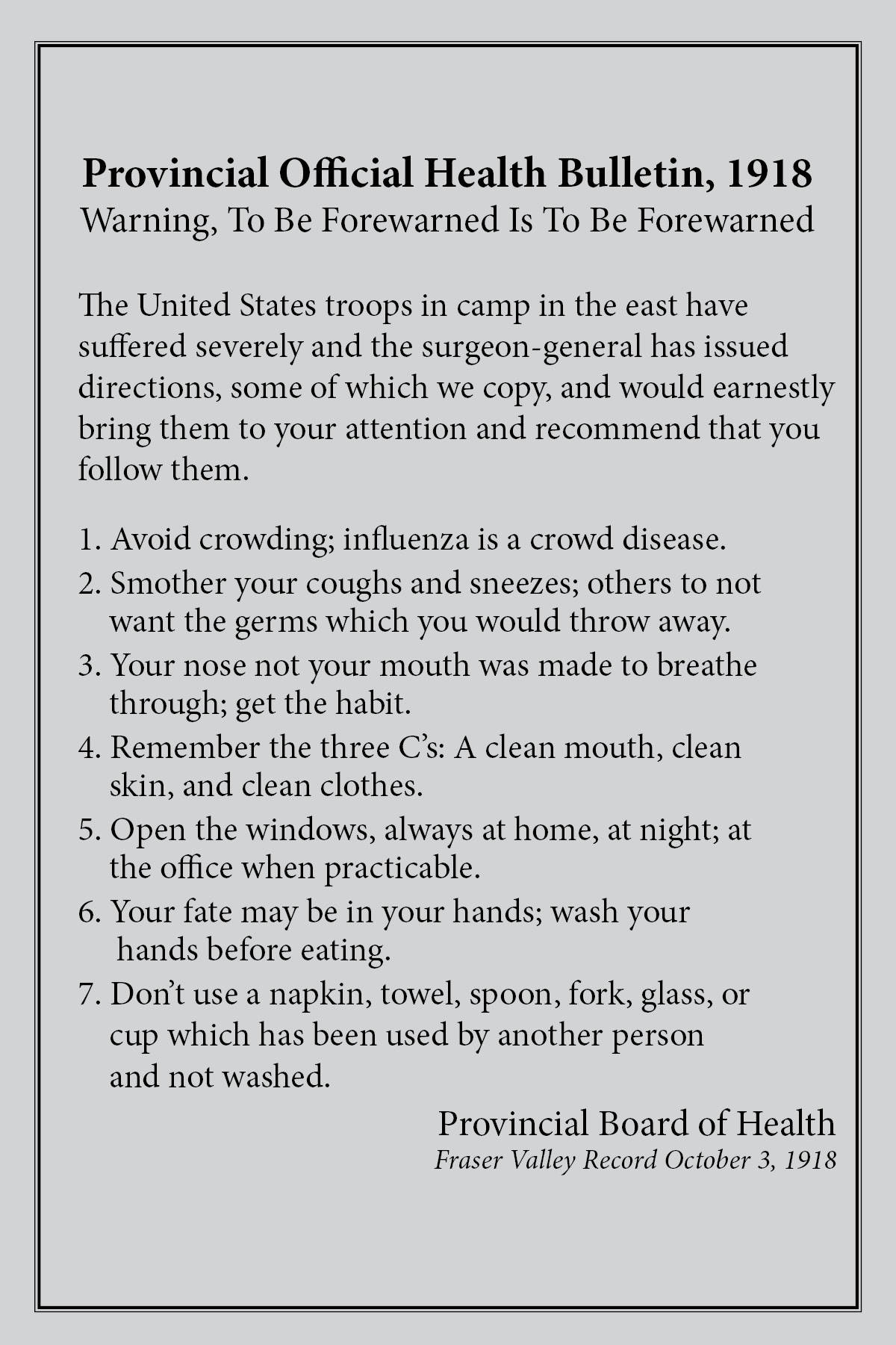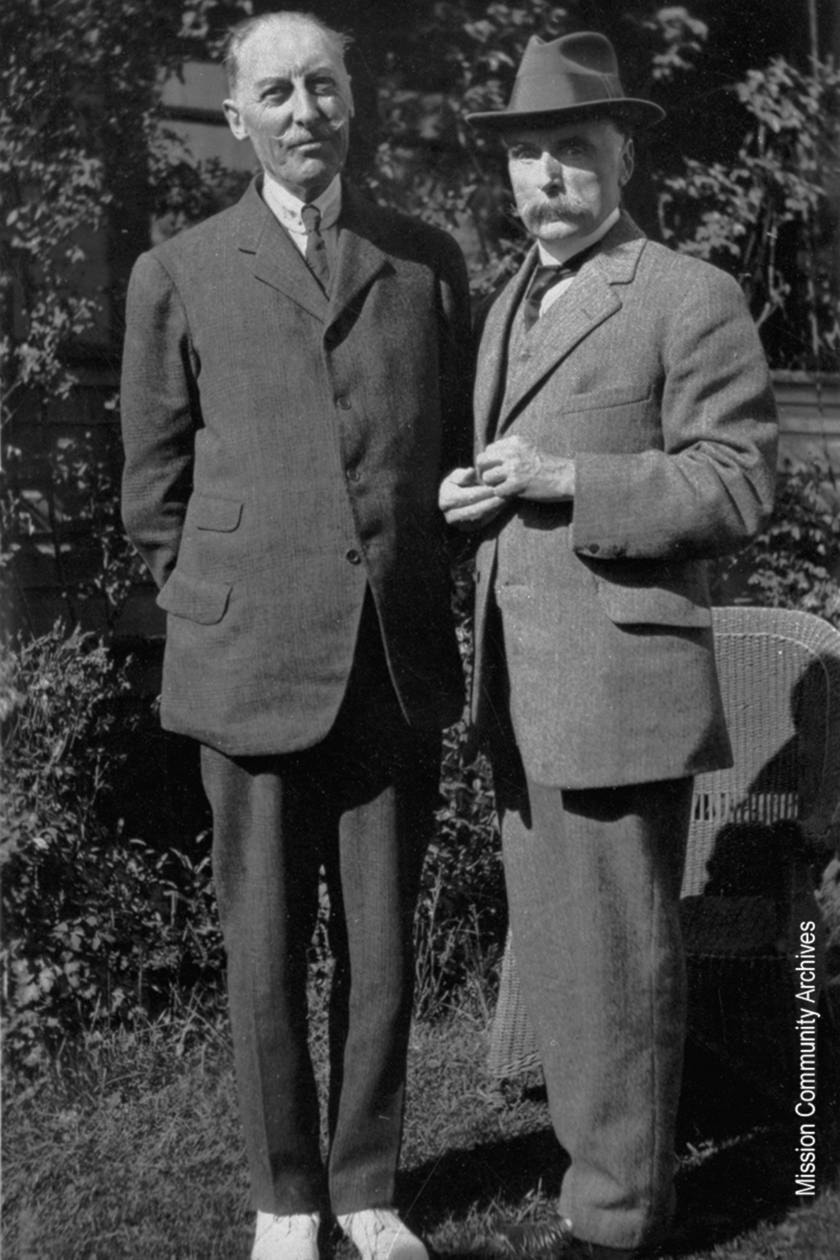In early October of 1918, a second wave of the Spanish flu – a much more contagious and deadly outbreak – arrived in British Columbia. At the time, Mission City’s population was only 800 with smaller pockets concentrated in the outlying areas including: Hatzic (500), Silverdale (200), and Stave Falls (fluctuated between 100 and 300).
Frontline health care services included a resident doctor by the name of Alexander Stuart (1901-1928) who was also the appointed Medical Health Officer (1911-1928) and Mrs. Margaret Middleton who operated the “first nursing home in Mission City.”
However, caring for the sick generally took place in the home as it was viewed the responsibility of family, friends, and neighbours with knowledge of healing practices.
News about the pandemic first appeared in Mission’s paper on October 3, 1918. Headlined: “How to Avoid the Spanish Influenza” the front page article included information about how extremely infectious the flu was and a suspected case reported by a former Mission physician, Dr. Frederick Underhill (1884-1897) who was Vancouver’s first full-time public health officer.
The following week, the first case of the dreaded flu was reported in Mission City by the local paper but had no details. From that point onward, subsequent news about what transpired in the community were like modern day “Tweets.” With the exception of additional articles on the precautions to take against the influenza, and home-made remedies for those sick, the majority of the updates comprised no more than a sentence or two found in weekly columns, including “Local and Personal,” and “Dewdney Doings,” or as news within other articles and ones with no headings.
Perhaps this is because unlike other neighbouring communities in the Lower Mainland, the flu did not reach the epidemic proportions in Mission necessitating the prohibition of gatherings nor the closure of all schools and non-essential businesses.
On Monday, Nov. 11, for instance, residents flocked in huge numbers to First Avenue to celebrate the signing of the armistice, ending the First World War and later in the month, the 7th Annual Fraser Valley Teachers’ Institute was held in the Mission City Public School. The only known closure of a business was Mission’s Victor Theatre “… owing to not being able to get the proper film services from Vancouver” which lasted just over a week.
Containing the contagion is credited to Dr. Stuart’s “prompt action…and the careful watchfulness and obedience of the rules of health…” by the local residents. This of course, does not diminish the gravity of the pandemic’s impact in the community.
A plea for “volunteer nursing in connection with the influenza” for emergency cases and donations of old linens to make handkerchiefs was published in the Nov. 7 issue of the local paper.
Notices of who was sick, convalescing, and succumbed to the virus appeared every week in the newspaper, including nurses from Mission working in Vancouver General Hospital. Near the end of October, one death and 20 cases were reported among the Japanese community of Mission while funeral services for Frank Lind, the 16 month old son of a Mission CPR family who died of the flu, was front page news.
In mid-October Hatzic School was closed “indefinitely on account of the epidemic” followed by Steelhead School (announced Oct. 24) and Silverhill School “on account of the prevalence of influenzas in that settlement” (Dec. 5).
In addition, “a great number of cases of flu in the Indian school” were reported in the local paper on Nov. 7.
In the New Year (1919) all Mission public schools re-opened on Jan. 6 with the exception of Hatzic which did not open again until Feb. 10.
The Dewdney Doings column in the local paper on Jan. 23 reported “Dewdney School attendance is gradually increasing since most everyone has revived from this despicable epidemic – the flu, which has taken so much life.”
– Information provided by Val Billesberger

